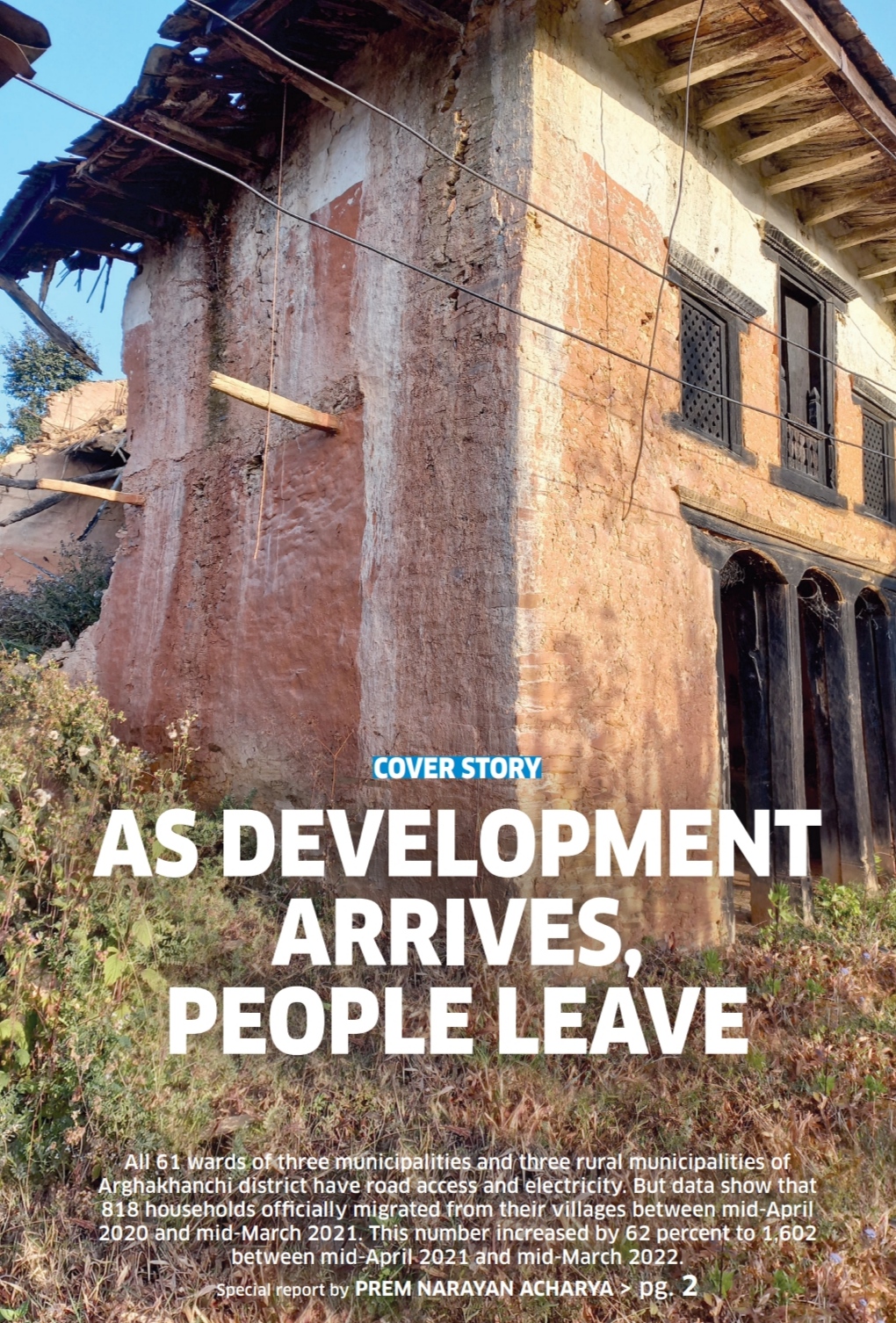Krishna Prasad Shrestha, mayor of Sandhikharka Municipality, says that the main reason for migration is the lack of access to healthcare, education, and employment opportunities.
Despite having various tourist attractions such as Supa Deurali, Argha Bhagwati, Panini Tapobhumi, Khanchikot Bhagbati, Chhatra Maharah, Malarani, Narsimhasthan, and Siddheshwar, no concrete plans or programs have been put in place to promote these sites and provide income-generating activities for the local population. "Earlier villages had no road access, no electricity, and the post office was the only means of communication. People had to fetch water from community taps. Despite these challenges, villages were full of people. Now, we having everything, but people are leaving their villages," says Top Bahadur Rayamajhi, a former minister and lawmaker from Arghakhanchi. He cites subsistence farming and a lack of employment, quality education, and quality health services as the reasons for families abandoning their villages. “Development in various fields like agriculture, animal husbandry, tourism, industry and hydropower can provide job opportunities to the people and can help reduce migration,” says Rayamajhi. He suggests that all six local units in the district should prioritize the development of agriculture, industry, tourism, animal husbandry, and cash crops to curb migration. They should also create a favorable environment for local people by promoting income-generating activities, skill-based training programs, and maximizing the use of resources. Pushpa Bhusal, former deputy speaker and Nepali Congress leader, says despite implementing development projects in the district, they have failed create enough jobs and improve socio-economic conditions of the people. "Development should not be limited to infrastructure alone. Our failure to prioritize income-generating activities, self-employment and production has caused the people in the district to migrate in droves." Bhusal emphasized the importance of introducing special programs to curb migration. Arghakhanchi is one of the largest recipients of remittances in Nepal, with approximately 45,000 youths from the district working in countries such as India, Qatar, Malaysia, Saudi Arabia, and the UAE. Despite the significant inflow of money, a survey conducted by Sathi Saving and Credit Cooperatives and Arghakhanchi Saving and Credit Cooperatives two years ago showed that 80 percent of the remittances received are being spent in unproductive sectors. According to Prakash Bhusal, president of Sathi Saving and Credit Cooperatives, about 40 percent of the remittances worth approximately Rs 7.5 billion that enter the district annually is used for daily essentials such as consumables, motor vehicles, fuel, clothing, and communication. Another 40 percent is spent on buying land and building homes. Bhusal says that people are using the remittance money to purchase land and construct homes in Sandhikharka, the district headquarters, and in places outside Arghakhanchi, such as Kapilvastu, Butwal, Bhairahawa, Dang, Chitwan, and Kathmandu. “Only 20 percent of the remittances are being invested in starting small businesses such as agriculture firms, hotels, groceries, taxis, and buses. But even these ventures are failing because there aren’t many people,” says Bhusal. “Vast swathes of agricultural land in many villages are not producing anything because only elderly people are left behind. Children are in cities for education and the men have gone abroad for work.”











